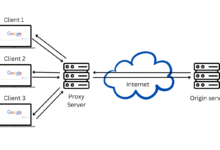
The Digital Productivity Paradox: Small Gaming Breaks Help You Get More Done
Everywhere you look, someone’s talking about working smarter, faster, or longer. We live in a culture obsessed with squeezing more out of every minute, constantly downloading new apps and tools that promise to make us even more productive. It’s easy to get caught up in the chase of always measuring your worth in completed tasks or how many unread emails you’ve been able to clear out of your mailbox. We’re told to optimize, multitask, and, more importantly, NEVER STOP.
But what if that’s the real problem? As experts point out, modern culture often links human value directly to productivity. This is a mindset that leaves little room for actual rest or creativity. Ironically, this relentless pressure can do the opposite of what we intend. It burns us out and dulls our focus.
So, before you reach for another time-tracking app or yet another caffeine fix, it might be worth reconsidering what productive really means. True efficiency isn’t about doing more. It’s about working with balance and rhythm. Sometimes, the key to progress lies in taking a well-timed pause, even a short digital one. And yes, that could mean stepping away for a few minutes to enhance productivity in ways that don’t involve more work at all.
Table of Contents
Why Micro-Breaks Matter
Most people think productivity means powering through. You hit a wall, grab another coffee, and keep going because stopping feels like failure. But the truth is, your brain isn’t designed to run on a constant loop of focus.
Attention works in waves. When you push too long without rest, your cognitive energy dips, creativity fades, and small mistakes start to pile up.
That’s where micro-breaks come in. They’re short, intentional pauses that last just a few minutes, which is enough to let your brain reset without losing momentum. In fact, research shows these tiny breaks can improve concentration, mood, and energy levels throughout the day.
According to Harvard Business Review, taking breaks during work isn’t a sign of distraction. It’s a proven method for sustaining focus and avoiding burnout. The key is to pause with purpose. So, if you scroll aimlessly for 10 minutes, your mind stays cloudy. But if you step away for a mindful walk or a quick puzzle game, then you return sharper than before.
Productive Play: Games That Recharge Your Brain
When most people think about taking a break, they imagine scrolling through social media or checking messages. But those kinds of distractions rarely leave you feeling refreshed.
True downtime shouldn’t drain more focus; it should restore it. That’s where light, structured games come in. Simple puzzles, logic apps, or digital card games can help your mind switch gears without slipping into distraction mode.
For instance, a quick game of solitaire gives your brain the kind of calm challenge it craves. The game’s clear rules, soft rhythm, and short sessions make it ideal for a mental reset.
It offers just enough problem-solving to engage your focus, but not so much that it feels like work. Unlike the constant buzz of notifications or the endless scroll of social feeds, solitaire encourages quiet thinking.
Psychologists sometimes call this kind of play “active rest.” It’s not about escaping responsibility; it’s about giving your cognitive processes space to breathe. When your brain takes a gentle detour into something structured yet relaxing, it recharges your attention span and boosts creative thinking once you return to work.
A few thoughtful minutes of digital play can help you come back sharper, calmer, and surprisingly ready to tackle your to-do list again.
How to Use Breaks Strategically
Taking a break doesn’t mean losing focus, but how you use that time matters. The difference between a productive pause and pure procrastination often comes down to intent. When you treat breaks as part of your work rhythm rather than an interruption, they start working for you instead of against you.
Try scheduling short resets every 60 to 90 minutes. Even five minutes of stepping away from your desk, stretching, or sipping water can make a measurable difference.
If you work digitally all day, give your eyes and brain a break from constant information by looking at something physical, whether it is the view out the window, a quick walk, or even a few minutes of light exercise. You’ll return more grounded and alert.
If you prefer digital downtime, choose something simple and goal-oriented. That could be solving a quick puzzle or playing a game with a clear endpoint. What matters most is that the activity has structure. It gives your mind something calm to latch onto before re-engaging with work.
The other key is to set boundaries. A five-minute break can easily become a thirty-minute distraction if you don’t time it. Set a timer, stick to it, and notice how much easier it is to regain momentum. Over time, this practice turns breaks into tools for consistency rather than guilt trips.
Remember: The best workers don’t push until they crash. They learn when to pause, refocus, and come back stronger.
The Tools and Tech That Help You Stay Focused
Technology often gets blamed for distraction, but when used wisely, it can actually protect your focus. The trick is to make your devices work for you instead of against you.
Focus apps like Pomofocus or Forest make it easy to schedule work sprints and timed breaks. They remind you when it’s time to stop, breathe, and switch gears.
Browser extensions such as RescueTime or StayFocusd can track how you spend your digital hours, helping you spot patterns that drain energy or waste valuable attention. Even something as simple as setting Do Not Disturb mode during deep work can transform your mental clarity.
The best tools aren’t the ones that push you to do more, but the ones that help you slow down strategically. Think of them as systems that give structure to your day so your brain can focus on what matters most. Combined with intentional breaks and mindful mini-games, they form a routine that’s both sustainable and satisfying.
Technology becomes an ally in creating balance. It’s not about maximizing every second; it’s about building a rhythm that keeps you creative, efficient, and mentally clear.








